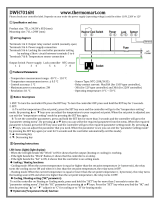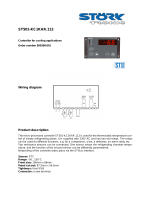
ATR243 - User manual - 3
Table of contents
1 Safety guide lines ......................................................................................................................................5
2 Model identification .................................................................................................................................5
3 Technical Data ...........................................................................................................................................5
3.1 General data .....................................................................................................................................5
3.2 Hardware data .................................................................................................................................6
3.3 Software data ................................................................................................................................... 6
4 Dimensions and Installation .................................................................................................................. 7
4.1 Panel Assembly ................................................................................................................................8
4.2 Electronics Removal ........................................................................................................................ 8
5 Electrical wirings .......................................................................................................................................9
5.1 Wiring diagram ................................................................................................................................9
6 Display and Key Functions .................................................................................................................... 15
6.1 Numeric Indicators (Display) ...................................................................................................... 15
6.2 Meaning of Status Lights (Led)...................................................................................................15
6.3 Keys ....................................................................................................................................................16
7 Controller Functions ............................................................................................................................... 16
7.1 Modifying Main Setpoint and Alarm Setpoint Values ......................................................... 16
7.2 Auto-Tuning ....................................................................................................................................16
7.3 Manual Tuning ...............................................................................................................................16
7.4 Automatic Tuning .......................................................................................................................... 17
7.5 Soft-Sta rt .......................................................................................................................................... 17
7.6 Automatic / Manual Regulation for % Output Control ....................................................... 17
7.7 Pre-Programmed Cycle ................................................................................................................18
7.8 CN-Config-Module (optional) ....................................................................................................19
7.9 Latch-on function......................................................................................................................... 20
7.10 Loop Break Alarm On Current Trasformer ............................................................................. 20
7.11 Digital Input Functions ............................................................................................................... 22
7.12 Dual Action Heating-Cooling ................................................................................................... 23
8 Serial Communication ...........................................................................................................................24
9 Enter configuration ................................................................................................................................ 29
9.1 Loading default values................................................................................................................ 29
10 Table of Configuration Parameters ................................................................................................... 30
11 Alarm Intervention Modes ....................................................................................................................42
12 Table of Anomaly Signals ......................................................................................................................45
13 Configuration EASY-UP ........................................................................................................................ 46


























